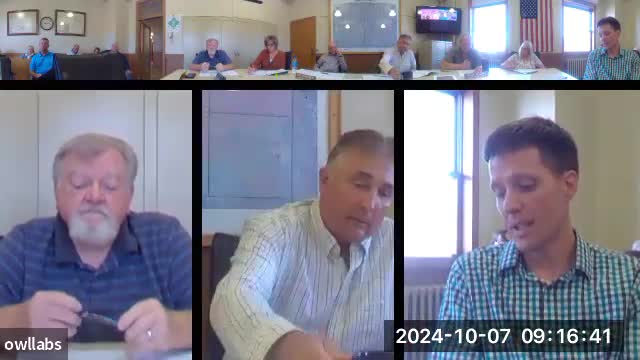City faces backlash over messy school construction project
October 07, 2024 | Humboldt County, Iowa
This article was created by AI summarizing key points discussed. AI makes mistakes, so for full details and context, please refer to the video of the full meeting. Please report any errors so we can fix them. Report an error »

During a recent government meeting, officials discussed the challenges and implications of a construction project that coincided with the start of the school year. The project, which involved road work on Main Street, faced delays that restricted traffic to one lane, causing significant inconvenience for parents and students during the first week of school. The completion of the project was delayed until August 28, despite initial expectations.
The discussion highlighted the complexities surrounding the assessment of liquidated damages, which could amount to $300 per day for incomplete work. However, officials expressed skepticism about the ability to prove actual damages resulting from the delays, citing confusion and miscommunication among contractors as contributing factors. As a result, there was a consensus against imposing liquidated damages on the contractor, Blacktop Service.
Further complicating matters, the project involved multiple subcontractors, leading to additional confusion regarding responsibilities for finishing touches, such as sidewalk and curb work. The timing of the project also overlapped with another downtown construction initiative, exacerbating traffic issues and detours.
Officials also addressed concerns regarding the quality of seeding in areas affected by the construction. Although seeding was completed, many areas failed to establish grass due to unfavorable weather conditions. Two potential solutions were proposed: hiring a seeding contractor to redo the work or reimbursing affected landowners for damages. The latter option would shift the responsibility to the landowners.
A letter from a local resident, Janet Erks, was read during the meeting, detailing her dissatisfaction with the restoration of her lawn following the construction. She reported poor-quality soil and inadequate grass growth, requesting that her lawn be restored to its original condition. This letter underscored the ongoing concerns about the project's impact on local residents and the need for effective communication and resolution strategies moving forward.
As the meeting concluded, officials acknowledged the challenges faced during the project and the importance of addressing residents' concerns while ensuring that future projects are better coordinated to minimize disruptions.
The discussion highlighted the complexities surrounding the assessment of liquidated damages, which could amount to $300 per day for incomplete work. However, officials expressed skepticism about the ability to prove actual damages resulting from the delays, citing confusion and miscommunication among contractors as contributing factors. As a result, there was a consensus against imposing liquidated damages on the contractor, Blacktop Service.
Further complicating matters, the project involved multiple subcontractors, leading to additional confusion regarding responsibilities for finishing touches, such as sidewalk and curb work. The timing of the project also overlapped with another downtown construction initiative, exacerbating traffic issues and detours.
Officials also addressed concerns regarding the quality of seeding in areas affected by the construction. Although seeding was completed, many areas failed to establish grass due to unfavorable weather conditions. Two potential solutions were proposed: hiring a seeding contractor to redo the work or reimbursing affected landowners for damages. The latter option would shift the responsibility to the landowners.
A letter from a local resident, Janet Erks, was read during the meeting, detailing her dissatisfaction with the restoration of her lawn following the construction. She reported poor-quality soil and inadequate grass growth, requesting that her lawn be restored to its original condition. This letter underscored the ongoing concerns about the project's impact on local residents and the need for effective communication and resolution strategies moving forward.
As the meeting concluded, officials acknowledged the challenges faced during the project and the importance of addressing residents' concerns while ensuring that future projects are better coordinated to minimize disruptions.
View full meeting
This article is based on a recent meeting—watch the full video and explore the complete transcript for deeper insights into the discussion.
View full meeting
